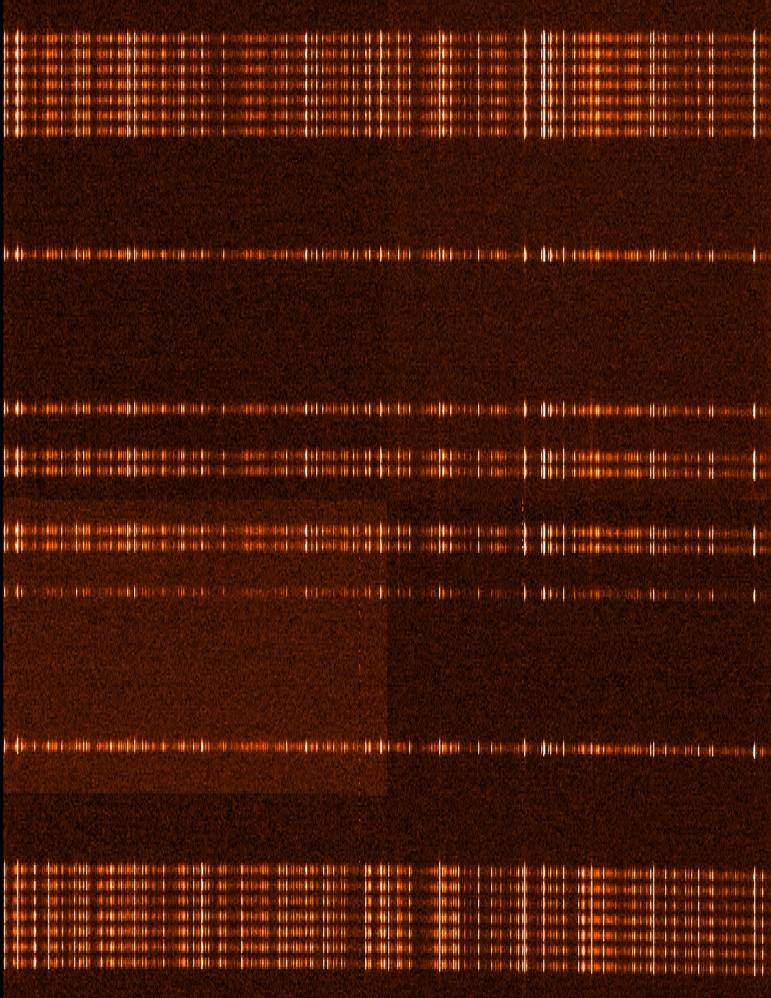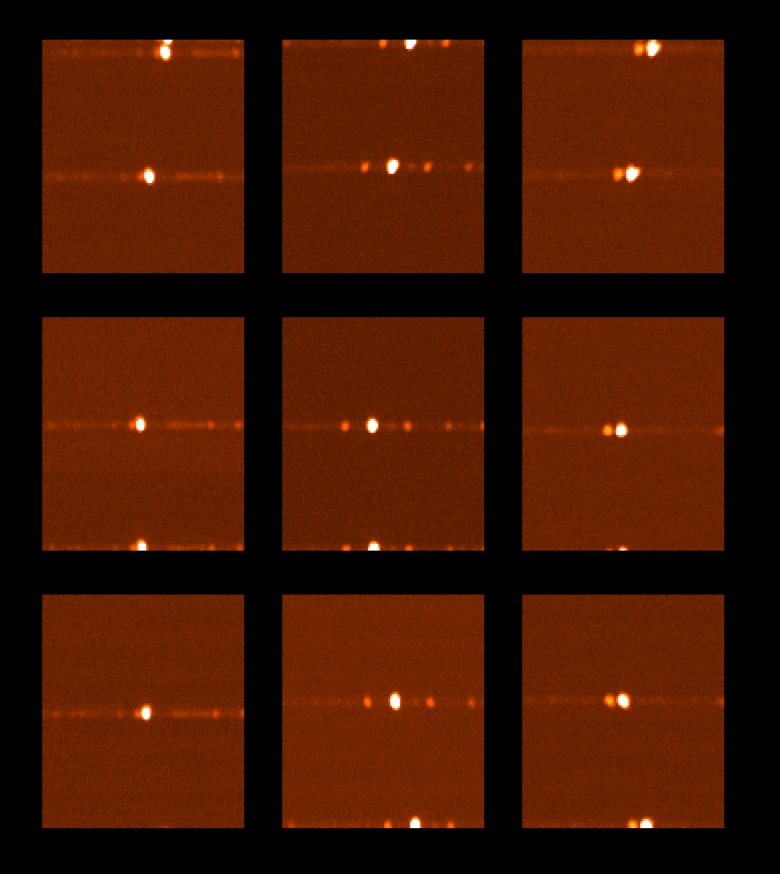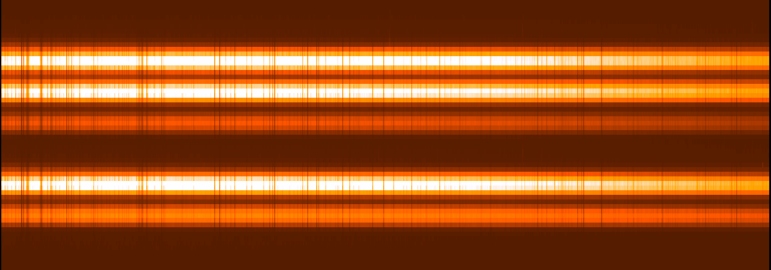4MOST first spectra
by Joe Liske on 2020-12-04
The 4MOST High-Resolution Spectrograph (HRS) has now reached "first light" (or first spectra) in the Landessternwarte (Heidelberg) lab for the green channel with an engineering grade detector. This is not only a major and exciting milestone for the project in general, but it also means that for the first time we have real HRS data to work with after many years of working with simulated data. It is also a validation of many aspects of the 4MOST opto-mechanical design, which allows the project to move forward with the remaining MAIT activities with increased confidence.
Walter Seifert (HRS Lead Engineer) reports: "The basic alignment of the channel with regard to wavelength range, image quality and spectral resolution has been performed in two days without any issues. Further iterations on optimising the performance will be done with the actual science detector in place. Nevertheless, the spots are already in or close to specification. Apart from flatfield and spectral arc exposures using the lab calibration unit, we also took a spectrum of the sun by holding an auxiliary fibre out of the window towards the sky."
Roelof de Jong (4MOST PI) commented: "I am very excited to see these first spectra from the High-Resolution Spectrograph. It is wonderful to see that within a few days of effort the team is already meeting most specifications. This gives great credit to the many excellent people involved from across the consortium: the HRS team of course, but also the detector and control hardware teams, the fibre team, and now the data management system team. I want to thank them all for their dedicated efforts."


Left: HRS spectrum of a ThAr lamp. The full wavelength range of the green channel (516 – 573 nm) is shown for a few central fibres. Right: image quality test using the ThAr spectra. Shown are 100 × 100 px at the four corners of the detector as well as some intermediate points.

